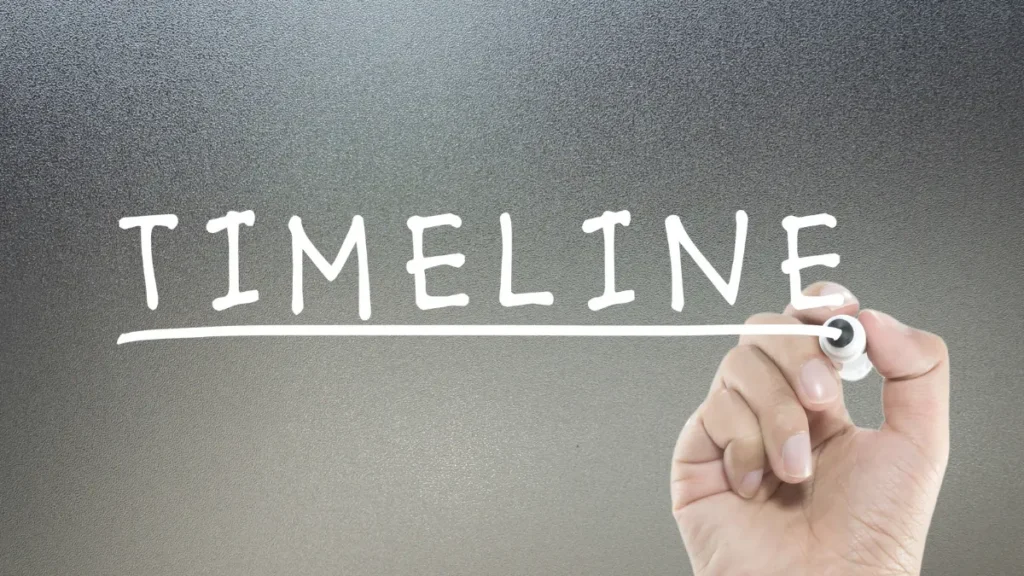Your team has just submitted a major grant proposal after weeks of tireless work. You hit the “submit” button, breathe a huge sigh of relief, and think, “The hard part is over.”
This is one of the most common and dangerous misconceptions in the non-profit sector. In reality, submission is not the finish line; it’s just one milestone in a very long race. Many NGO leaders in West Africa, especially those new to formal funding, drastically underestimate the full process. This can lead to serious cash flow problems, project delays, and immense frustration.
To plan effectively and manage your organization’s financial health, you need a clear-eyed view of realistic Grant Application Timelines. This guide will break down the entire process, from finding an opportunity to the moment the funds actually arrive in your bank account.
The Big Picture: Why It Always Takes Longer Than You Think
From the outside, it can be baffling why it takes so long for a funder to make a decision. Remember that large foundations and international donors have multi-layered review processes, board meetings that only happen quarterly, and rigorous due diligence procedures. The timeline is built around their internal systems, not your organization’s immediate needs. Patience and long-term planning are non-negotiable.
A Phase-by-Phase Breakdown of Grant Application Timelines
Here is a realistic look at each stage of the journey.
Phase 1: Prospecting and Research (1-3 Months)
This is the active search for the right funding opportunities. It is not a quick Google search.
- What happens: You are identifying funders whose missions align with yours, researching their past grantees, and carefully reviewing their specific guidelines and eligibility criteria.
- Why it takes time: You need to find a perfect match. Applying for misaligned grants is the biggest waste of time in the non-profit sector. This strategic patience is crucial.
From Endless Searching to Strategic Action
This initial phase of finding the right grant can be a huge time sink. Sifting through irrelevant opportunities is inefficient and demoralizing. This is where a curated database becomes your most valuable time-saving tool. At grantsdatabase.org, we do the prospecting for you, monitoring hundreds of donors and delivering opportunities directly relevant to your work in West Africa. We cut down your research time from months to hours, allowing you to focus on the next crucial phase.
Phase 2: Proposal Development (3-6 Weeks)
Once you’ve found a good fit, the writing begins. This is rarely a solo activity.
- What happens: You need to coordinate with your program team for activity details, your M&E team for impact data, and your finance team for the budget. Then comes the actual writing, editing, and internal review.
- Why it takes time: A high-quality proposal requires input from multiple people. To manage this complex process, many successful grant writers use project management tools. Learning to create a simple project timeline or a Gantt chart can be a game-changer for keeping your team on track.
Phase 3: The Waiting Game (3-6 Months)
This is often the most frustrating phase. After you submit, the proposal enters the funder’s internal “black box.”
- What happens:
- Initial Screening: A program assistant checks if you met all the basic eligibility rules.
- Program Officer Review: Your assigned officer reads the proposal in detail.
- Panel Review: A committee of internal (and sometimes external) experts discusses and scores the top proposals.
- Board Approval: The final list of recommended grantees is sent to the foundation’s Board of Directors for final approval.
- Why it takes time: Each of these steps takes weeks, and board meetings may only occur once a quarter.
Phase 4: Due Diligence and Award (1-2 Months)
Congratulations, you’ve been notified of your success! But the money isn’t in your account yet.
- What happens: The funder will conduct a final due diligence check, verifying your legal registration (CAC, SCUML), and financial health. You will then negotiate and sign the final grant agreement or Memorandum of Understanding (MOU).
- Why it takes time: Legal and financial reviews, both internally and on the funder’s side, can take several weeks of back-and-forth communication.
Phase 5: First Disbursement (2-4 Weeks)
Once the agreement is signed, the funder processes the first payment (tranche).
- What happens: The funder’s finance department processes the wire transfer.
- Why it takes time: Internal payment processing schedules and international bank transfers are not instantaneous.
The Realistic Total Timeline: 6 to 12 Months
When you add it all up, the period from starting your search for a grant to receiving the first disbursement can realistically take anywhere from 6 to 12 months, and sometimes even longer for very large, complex grants.
Conclusion
Understanding realistic Grant Application Timelines is essential for strategic planning. Grant funding is a long-term fundraising strategy, not a solution for an immediate cash flow crisis. By building these timelines into your annual planning, you can manage your resources effectively, reduce stress on your team, and build a sustainable future for your organization. Patience, persistence, and planning are the keys to success.
